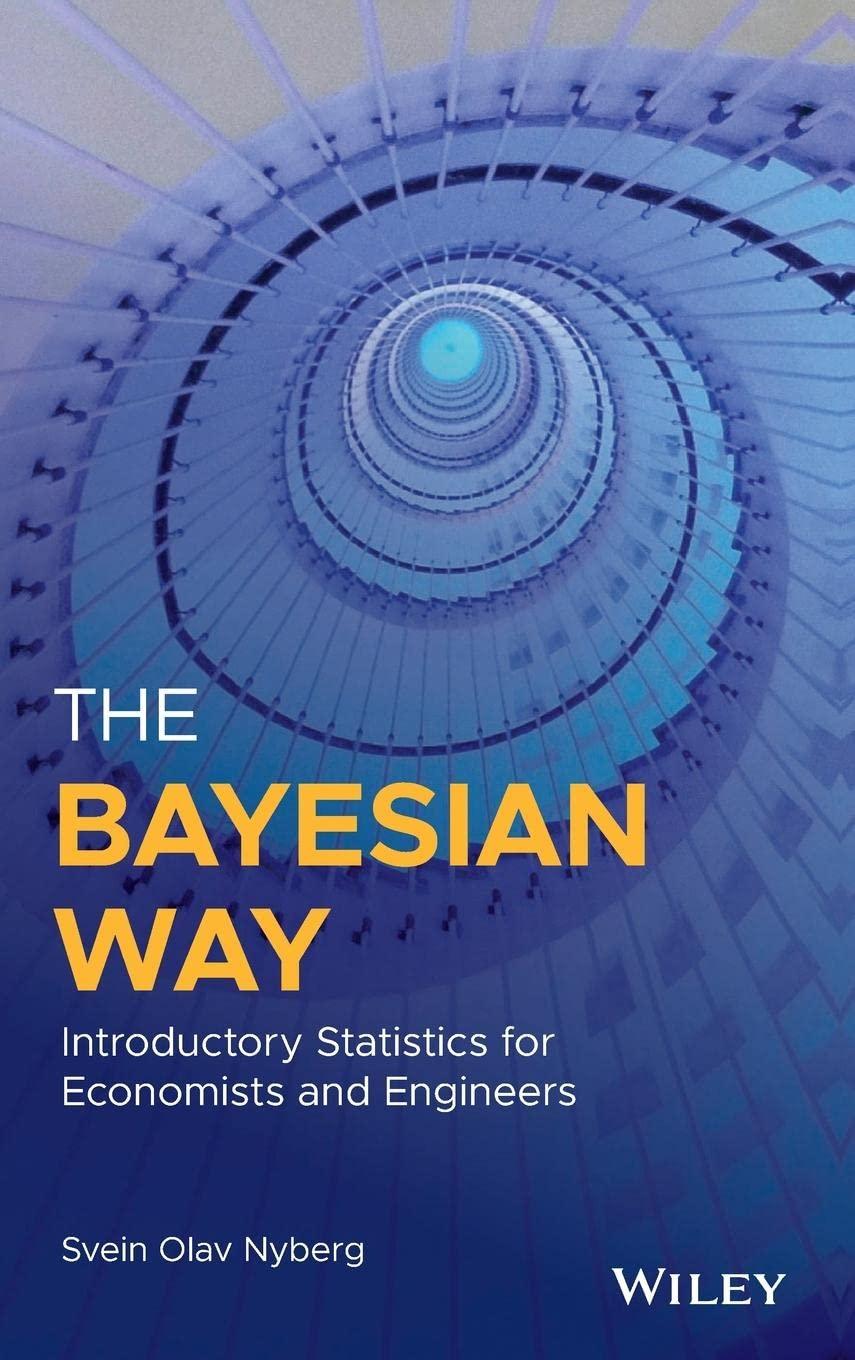Make a die or any other physical object that may serve as your random generator. Divide the
Question:
Make a die or any other physical object that may serve as your "random generator". Divide the possible outcomes into two roughly equal sets. If, for instance, you have made a 6-sided die, you may divide it into \(A\) : "low numbers" \((1,2,3)\) and \(B\) : "high numbers" \((4,5,6)\). Your task is to estimate the \(\pi\), the probability of getting \(A\).
(a) Make a guess at the value of \(\pi\). Guess is the key here, but feel free to make a few preliminary trials. Let \(p\) be this value, and let \(n\) be the number of tosses you would have to perform to be as certain as you are. Let your prior distribution be \(\pi \sim \beta_{(a, b)}(x)\), where \(a=n \times p\) and \(b=n \times(1-p)\). If you need easy calculations, round off \(a\) and \(b\) to the nearest integer.
(b) Use the cumulative beta distribution (Section 10.5) to find the probability that \(P(\pi>0.5)\).
(c) Use the inverse cumulative beta distribution (Subsection 10.5.4) to find an interval \(\left[A_{1}, B_{1}ight]\) such that \(P\left(\pi
(d) Toss the die a self-chosen number of times, and get \(k A\) and \(l B\). What is the probability of this outcome if \(\pi=x\) ? This is your likelihood function \(g(x)\).
(e) Find the posterior probability distribution for \(\pi\).
(f) Find the probability that \(P(\pi>0.5)\).
(g) Find an interval \(\left[A_{2}, B_{2}ight]\) such that \(P\left(\pi
(h) Repeat the last three assignments, and repeat again. Make a guess at how many trials you must make for the interval \(\left[A_{n}, B_{n}ight]\) to be no wider than 0.1 .
(i) And repeat.
Step by Step Answer:

The Bayesian Way Introductory Statistics For Economists And Engineers
ISBN: 9781119246879
1st Edition
Authors: Svein Olav Nyberg





